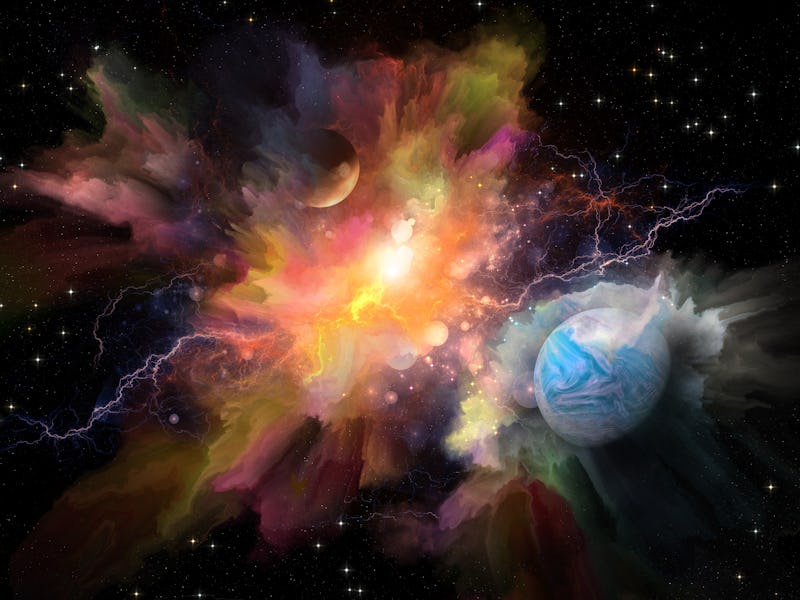Astronomers catch a preview of the Sun's grisly demise
Scientists have long known the fate of our solar system — and likely the fate of Earth itself.

Scientists have long known the fate of our Solar System — and likely the fate of Earth itself.
In a few billion years, the Sun will run out of fusion fuel and expand to a “red giant” phase, likely swallowing everything in the solar system up to the orbit of Mars. But, some of the planets past that point could survive, like Jupiter and Saturn. Now, scientists have used the Keck Observatory to see a system that looks like what ours will after the Sun’s red giant phase for the very first time.
They used a technique called gravitational lensing, an exoplanet detection technique using the effect gravity has on light to detect planets around stars that line up directly in front of another star, acting like a cosmic magnifying glass.
The research was published in Nature.
UT video discussing the end of the Earth.
In this case, a team led by Joshua Blackman, a postdoc at the University of Tasmania, saw a planet as part of the microlensing system but didn’t see enough starlight in the foreground for the star the planet was orbiting to be a main-sequence star. Other possibilities such as a brown dwarf, neutron star, or black hole were also ruled out, leaving only one potential option – this newly found planet was orbiting a white dwarf.
White dwarfs are the final form that main sequence stars take when they perish and aren’t big enough to become a neutron star or black hole. After progressing through the red giant phase, they collapse back onto themselves in the last gasp and end up as a white dwarf, where they can last for billions of years.
UT video discussing the Sun’s evolution and eventual demise.
Astronomers had previously theorized that some planets might survive a star’s destructive red-giant phase and end up orbiting white dwarfs, but this is the first exoplanetary system that shows such an arrangement.
The parallels to our own system are striking. The confirmed planetary candidate is 40 percent larger than Jupiter, while the white dwarf remnant is about 60 percent of the mass of the Sun. Our Sun doesn’t have enough mass to create a black hole or a neutron star as part of its destruction, so it will end up in a similar white dwarf state in a few billion years.
Finding an example solar system shows that there is a possibility to ride out the Sun’s destruction, though relying on the white dwarf for heat to keep life going will not be possible.
Unless life finds a way to either expand out of the solar system or supply itself with energy not related to the Sun, it would be doomed even if the planet (or moon) it based itself on survived. But this is one more exoplanetary finding that will help futurists plan for that extremely far our eventuality.
This article was originally published on Universe Today by Andy Tomaswick. Read the original article here.
This article was originally published on